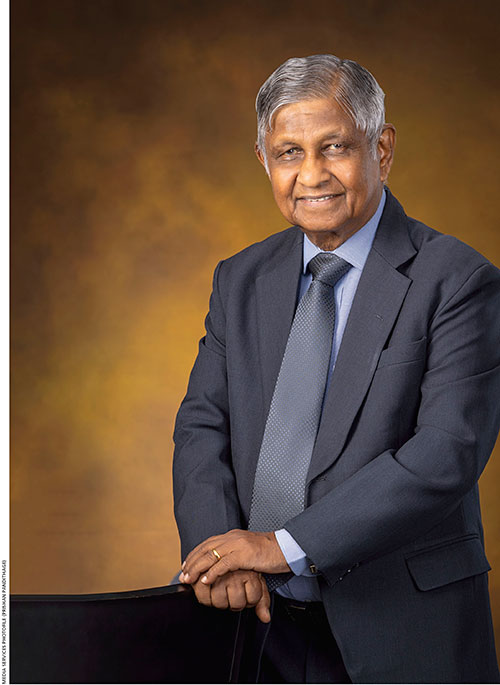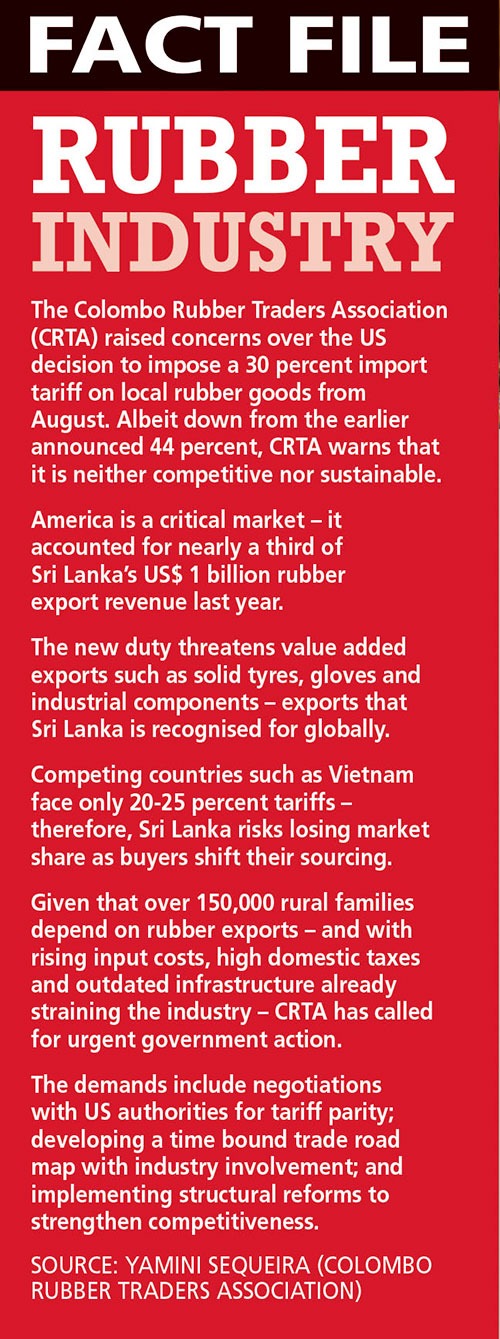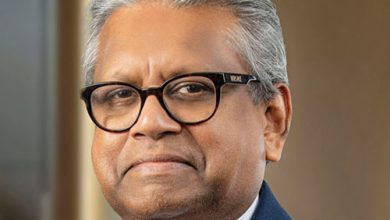RUBBER INDUSTRY

SUPPLY HEADWINDS
Compiled by Yamini Sequeira
RUBBER LEGACY RENEWAL
Dr. Kulathunga Rajapaksa urges more rubber output to regain our global edge

Once a powerhouse of Sri Lanka’s export economy, the rubber industry is facing a crisis: natural rubber production has declined from around 150,000 metric tonnes a decade ago to only 65,000 tonnes today.
“The main ingredient in rubber manufacturing is natural rubber; however, local rubber production has collapsed due to the absence of a structured plan for replanting trees. Excessive rain and the lack of incentives for new planting activity have further impacted output,” remarks Dr. Kulatunga Rajapaksa.
The long gestation period of seven years for rubber trees to mature is another deterrent for potential planters. He avers: “Farmers are unable to earn during those seven years; and without a support mechanism, smallholders simply can’t afford to replant.”
“A replanting scheme launched in 2015 covered 5,000 hectares in Monaragala, which yielded positive results and made it the highest rubber producing region. Unfortunately, the government at the time discontinued the scheme without replanting in the next designated area,” he laments.
Additionally, excessive rainfall in traditional rubber growing regions reduced the number of tapping days, compelling workers to exit the trade. As a result of these challenges, large companies shifted away from rubber cultivation to palm oil and tea, which have shorter cycles and lower labour costs.
RISING IMPORTS Rajapaksa observes: “With domestic supply collapsing, manufacturers turned to imports to keep factories running. Many invested heavily in machinery and saw no choice but to import natural rubber to sustain operations.”
“This has undermined a key national advantage. Previously, our exports were 100 percent local rubber. Today, a substantial share is imported, depleting foreign exchange reserves,” he maintains.
The rubber glove manufacturing segment – where demand surged during the COVID-19 pandemic – has also had to rely on imported latex.
DETERRENTS Rajapaksa asserts that “high energy costs and outdated labour regulations have deterred foreign investors. Rubber manufacturing is energy intensive; and our energy prices are among the highest in the region.”
He points out that even if a factory remains closed for a month, kVA charges must still be paid. “What incentive is there for investors when we face a labour shortage, lack of local rubber and high energy costs?” he asks.
Labour regulations also hinder competitiveness. “Working on Sundays, which are mandatory holidays, costs a company three times the normal overtime rate – including an additional day off. No other country has such a system,” he notes.
Securing land from the government is another tough proposition, he says: “Access to industrial land is difficult; and without it, we can’t build the necessary infrastructure.”
BOTTLENECKS “Testing is another bottleneck. All buyers demand certifications but accredited laboratories do not exist in this country. This forces exporters to send samples overseas for testing, which is costly. We urge the government to subsidise part of this expense to relieve the burden on exporters,” he states.
Infrastructure gaps are equally pressing. “We need free trade zones with centralised water treatment plants. Each rubber factory cannot afford its own purification system,” Rajapaksa muses.
He continues: “Another obstacle is that Sri Lanka’s FTAs have been poorly negotiated, making quality certification a barrier to trade. Despite the free trade agreements, some countries accept only their own national standards certification, not even European or American standards.”
The result, he points out, is that Sri Lanka hasn’t been able to expand exports to such markets.
Rajapaksa also highlights the new rules on export proceeds: “The government now enforces the rule that all export earnings must be brought back within 180 days. That’s a positive move but additional incentives – such as tax benefits – could make it more attractive.”
And he recalls the convertible rupee account (CRA) system from decades ago: “The moment foreign exchange was brought in under this account, exporters received a three percent incentive and goods could also be imported. It was well-received by exporters.”
“Unfortunately, no such incentive exists today, which deters some exporters from repatriating their earnings,” he says. On the other hand, he believes that the digitalisation of customs processes has been a rare success in the export chain.
SHORTAGES The industry is also facing a shortage of skilled engineers and technicians. He warns that “with new taxes biting into middle-class incomes, many professionals are migrating. That’s a huge cost, which the nation can ill afford.”
Rajapaksa calls for tax reforms and private universities to retain talent within the country. “Otherwise, our best people – the ones capable of modernising the industry – will be gone,” he cautions.
Labour regulations concerning night shifts for female workers also need to be updated. “We must make it easier for women to participate in the workforce,” he adds.

REVIVAL Despite the headwinds, exporters continue to uphold global sustainability standards, ensuring there is no child labour while complying with health, social security and environmental parameters. In this regard, Sri Lanka clearly comes out on top.
He says: “Most buyers in the industry are demanding the Forest Stewardship Council (FSC) certification – and some local estates have already earned the certification to remain competitive.”
Yet, he worries that “Sri Lanka is moving too slowly to comply with the EU’s new deforestation rules. Government action has been slow – and without certification, buyers simply won’t purchase our products.”
Port congestion and shipping delays also undermine Sri Lanka’s aspirations to be a logistics hub.
As Rajapaksa notes, “a few months ago, the port faced severe congestion, causing shipping lines to bypass Colombo. Freight costs also remain high. Efficiency must improve and sudden strikes should be avoided – otherwise, Sri Lanka can never be positioned as a logistics hub.”
His prescription for reviving the industry is clear: “We must replant natural rubber – now. A clear national plan is needed, including incentives to support smallholders during the seven year gestation period. Without raw materials, there’s no industry.”
“Although the government recommends local procurement, it hasn’t been made mandatory, which exposes local manufacturers vulnerable to cheaper imports,” he observes. But despite the obstacles, Rajapaksa is confident that the rubber industry can recover if policy consistency returns.
He opines: “We have world-class manufacturers producing solid tyres, bicycle tyres and industrial rubber goods. But without a secure supply of natural rubber and competitive costs, we risk losing our edge.”
In conclusion, Dr. Rajapaksa asserts: “If Sri Lanka wants to be a global hub again, we must cultivate our own raw materials, reduce the cost of energy and logistics, and create a predictable policy environment. Otherwise, the industry will simply shift elsewhere.”







